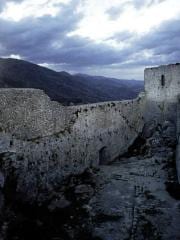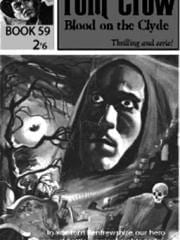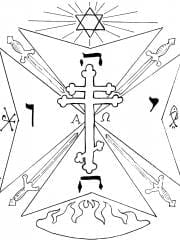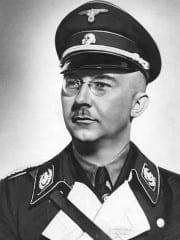Nacism
Otto Rahn in Wikipedia
Otto Wilhelm Rahn (n. Michelstadt, 18 de febrero de 1904 - 13 de marzo de 1939) fue un escritor alemán aficionado al esoterismo, la historia y el medievalismo. Miembro del Partido Nazi y Obersturmführer de las SS, su figura está asociada a las creencias esotéricas del ocultismo nazi extensamente difundidas en dicho cuerpo militar. Nació y se crio en el seno de una familia de clase media. Por influencia de su padre, juez en la ciudad de Maguncia, inició estudios de Derecho, aunque también le agradaba la música y era un buen pianista. Durante 4 años (de 1922 a 1926) estuvo matriculado en las facultades de Derecho de Giessen, Friburgo y Heidelberg.
What is the Grail?
The Grail. Between 1190 and 1240, it formed the central theme of a series of literary works that spoke of, and appealed to, a new social class, that of the knights and warriors and the adventures they encountered on their travels. In recent decades, it unleashed Indiana Jones on one of his death-defying treasure hunts and was the central ingredient of Dan Brown’s The Da Vinci Code, one of the biggest bestselling novels ever.
For Richard Barber, in The Holy Grail: The History of a legend, “it is, in all its forms, a construct of the creative imagination”. However, for dozens of other authors, the Grail is not a literary invention, but a veritable treasure, out there, somewhere. Unfortunately, in general, studies trying to identify and trace the physical Grail have taken on flights of fancy. The Grail has been linked with countries from the Middle East to America, as well as with the persecuted Cathars and even extra-terrestrial beings. It has been labelled a code word for the Ark of the Covenant, after the Templars allegedly transported it from the Middle East to a new hiding place in France.
The wooden book of Montségur
In the early 20th century, a series of palm leaves, containing anomalous writing, were apparently discovered within a hidden cache of the walls of the Cathar castle of Montségur. Though without any intrinsic value, the “wooden book” – as it became known – would become the centrepiece of the esoteric and metaphysical community; its discoverers even labelled it “the Oracle” and said it was able to contact the hidden masters of Agharta.
Montségur is seen as the final stronghold of the Cathar faith, a bastion of true devotion besieged by the worldly ambitions of the papal troops. In March 1244, the Cathars that had been locked inside the castle for months finally surrendered; approximately 220 were burned en masse in a bonfire at the foot of the pog when they refused to renounce their convictions.
Otto Rahn: A Hero's Journey
I recently visited the former South of France residence of the legendary Grail hunter Otto Rahn, only to discover that it was scheduled to be demolished, thus ending an era, and prompting this memorial.
I believe Otto Rahn (1904-1939) was a hero; the real Indiana Jones and prototype for Dan Brown’s Robert Langdon character. A tireless explorer, Rahn was a gifted researcher, committed to the quest like no one before, or since. Quite simply, he was a grail hunter extraordinaire.
Rahn was obsessed with the Cathars, and was convinced that their treasure remained hidden in the shadowy crevasses of the Pyrenees. His research led to Montségur, which he believed to be Munsalvaesche, the Mountain of Salvation of Wolfram von Eschenbach’s epic grail romance, Parzival. Not surprisingly, the entire region around Montségur soon became Rahn’s esoteric playground.
Philip Kerr: Berlin Noir
The book Berlin Noir by Philip Kerr consists of three novels with Nazi Germany in background - richer and more readable than most histories of the period. We first meet ex-policeman Bernie Gunther in 1936, in March Violets (a term of derision which original Nazis used to describe late converts.) The Olympic Games are about to start; some of Bernie's Jewish friends are beginning to realize that they should have left while they could; and Gunther himself has been hired to look into two murders that reach high into the Nazi Party. In The Pale Criminal, it's 1938, and Gunther has been blackmailed into rejoining the police by Heydrich himself.
Dan McNeil: The Judas Apocalypse, and Interview with the author
On the eve of the Second World war, Dr. Gerhard Denninger, a German archeologist is approached by infamous Grail seeker Otto Rahn who tells him a fantastic story of Templars, Church scandal, a long-buried manuscript, and the key to finding the famous lost treasure of the Cathars. In 1944, with the help of a group of American soldiers, Denninger continues his quest for the secret of the Cathar treasure. With dangers dogging them at every step, will they find what they’re seeking? And will they be prepared for the shocking discovery that awaits them?
Tom Crow Book 29 The Secret of the Templars Chapter 4 – Blood on the Clyde
pulp adventure based on the supposed local exploartions of Nazi archaeologist Otto Rahn
Tom travelled up from Hull, the nightmarish howling of those mysterious black dogs still echoing around his mind. What was Eros playing at this time? What had been the meaning of that bloody sigil scrawled onto the turret wall? Tom’s mind raced and clattered almost as if in time with the train. By the time the carriages pulled into Greenock he was no nearer the truth.
Tom was met on the platform by one of the agencies local operatives, Marianne, a member of the Free French. She in turn had directed him to the parish priest in Saint John’s Port Glasgow. After a friendly dram, the priest told him where to meet his next contact, the Bogle Stone; a huge rock perched at the top of the town, believed by locals to be haunted by an evil spirit.
The rain lashed down on Port Glasgow, as Tom approached the stone. A shadow moved from behind the rock.
“Tom Crow?” asked the shadow.
Indiana Jones and Otto Rahn (The Starlog Project: Starlog #152, March 1990)
Writer Robert Dassanowsky-Harris pens an intriguing cover story this issue, “The Real Indiana Jones,” that seeks to tie the fictional film hero to real-life attempts to find holy relics. Dassanowsky-Harris identifies German Holy Grail seeker Otto Rahn as the Indy prototype. Frankly, I’d prefer that he had focused on the Rahn story, which is odd and compelling in itself, rather than try to link every character and plot development to some real-life or mythical antecedent.
Nazis Attack Greenock In Search of Holy Grail
There is a long standing local story about a Nazi U-Boat which apparently managed to enter the Clyde in the midst of World War 2. Many believe that the submarine may have carried Nazi language specialist Otto Rahn, often associated with the Third Reich’s search for biblical artefacts (and the inspiration for the bad guy with the glasses in Raiders of the Lost Ark).
At the time of the U-Boat’s mission, Rahn was believed to be involved in looking for the Holy Grail. It is theorised that Rahn may have been entering the Clyde in order to make his way across country to Rosslyn Chapel, a church built by the Knights Templar and frequently linked with the Grail. However, if Otto Rahn's intended destination was indeed the Templar Church at Rosslyn near Edinburgh, why come in from the opposite end of the country via the heavily defended Clyde? It is entirely possible that if Otto Rahn was on the mysterious U-Boat, he fully intended to start his investigations on the West Coast. Certainly, he need not go as far east as Rosslyn to look into the mysterious Knights Templar; the area surrounding the Clyde has more than it's fair share of Templar connections.
Himmler and Otto Rahn's Cathars
Once a faithful Roman Catholic, Heinrich Himmler rejected religion at about the time that a parliamentary decree robbed him of his aristocratic title. Stripped of both his faith and social status simultaneously, Himmler, like the fictional Dieter Bachman of The Blood Lance, threw himself passionately into the Nazi cause. At the same time he became interested in all aspects of the occult.
Himmler does not seem to have been an especially brilliant man but he was educated, sophisticated, and notoriously energetic. As the leader of the SS, he oversaw the activities of the Gestapo; he ran the concentration camps; he provided Hitler ultimately with twelve divisions of elite armoured troops, and he built a massive civilian organisation devoted to German culture. It oversimplifies matters to suggest the SS was Hitler's Praetorian Guard, with Himmler in the role of Tiberius' Prefect, Aelius Sejanus. Likewise, it misses much of the complexity of the SS to say they are like the Knights Templar of the Crusade era. The similarities between the two organisations are probably not accidental, but it was the civilian side of the SS that made the Order of the Skull Himmler's own creation. It was into the civilian branch of the SS that Himmler recruited Otto Rahn.











Последние комментарии
13 лет 38 недель назад
13 лет 39 недель назад
13 лет 39 недель назад
13 лет 39 недель назад
13 лет 42 недели назад
13 лет 48 недель назад